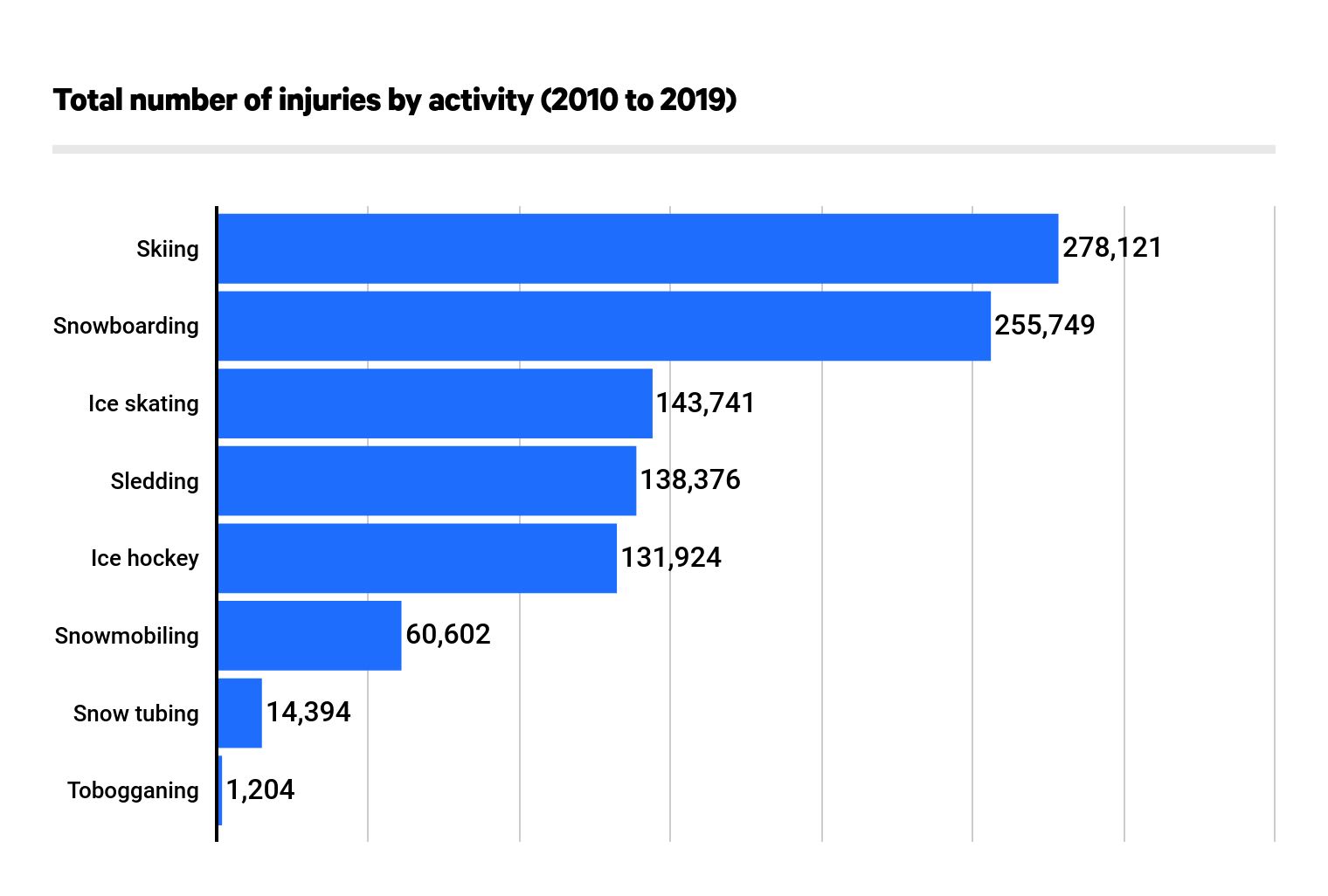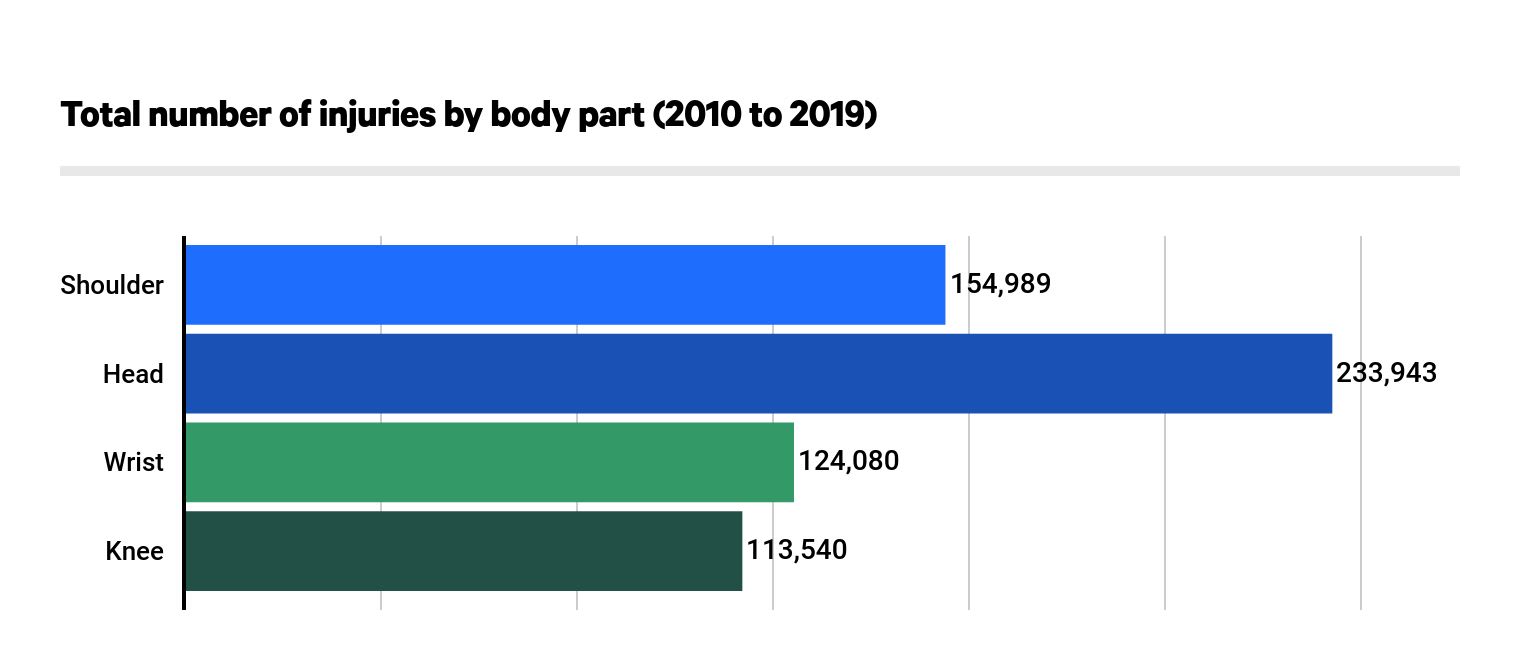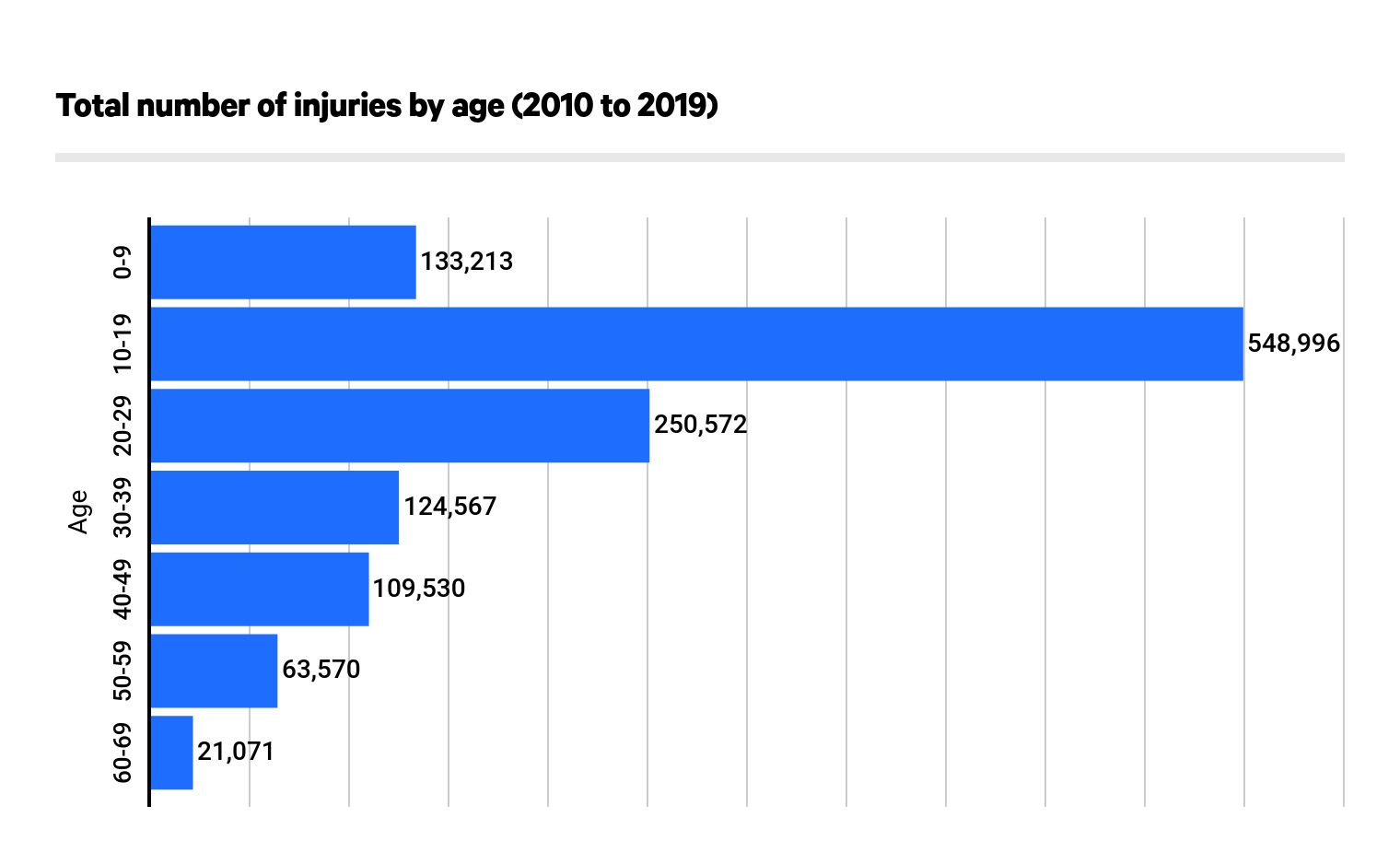Health Insurance
Most Dangerous Winter Sports of the Past Decade

For some, winter sports, or activities played on snow or ice, are a profession. But these activities are also hobbies for those who enjoy going outside or getting an adrenaline rush from high speeds. Unfortunately, these sports carry a real possibility of severe injuries.
ValuePenguin examined data from the past decade to determine the most injury-prone sports — and the common injuries from playing them. Skiing was the most common, injuring more than 278,000 people since 2010. Here’s what else we learned.
Key findings
- More than 1 million people have been injured in the past decade while participating in winter sports.
- Skiing (27%) and snowboarding (25%) account for the largest percentage of injuries across the sports we analyzed.
- Head injuries (nearly 234,000) are the most common across the winter sports we examined, ahead of shoulder injuries (nearly 155,000).
- Among the diagnoses, fractures are the most common at nearly 335,000.
- 10- to 19-year-olds outpaced the other age groups, accounting for nearly 44% of the injuries over the past decade.
While nearly 101,000 people were hurt in winter sports in 2019 and more than 1 million in the past decade, injuries have fallen by 4% in the period.
Skis, skates and other equipment used to make participants perform better on snow or ice put winter sports among the fastest activities. For this reason, injuries are bound to happen, in addition to lack of experience, human error or numerous other reasons.
The bad news: In the past decade, more than 1 million people have been injured while participating in winter sports, including 101,000 in 2019. The good (or somewhat good) news: Winter sports injuries have fallen 4% over the past decade.
In the period examined, injuries from winter sports reached a high in 2013 — more than 109,000 — and a low in 2016 — more than 91,000.
Ice hockey injuries have increased the most — 200% — over the past decade.
Ice hockey accounted for more than 6,300 injuries in 2010, but that number spiked to more than 19,000 in 2019 — a 200% increase.
Meanwhile, skiing and snowboarding combined for nearly 534,000 — or 52% of the total throughout the decade — winter injuries since 2010, which makes sense, as these are two of the most popular winter sports or hobbies.

Sledding injuries plummeted to more than 9,000 in 2019, a drop of 57% in the past decade — the biggest fall among the injuries we examined. For comparison, in 2010, sledding injuries were the third most common injury, slightly behind skiing and snowboarding.
Conversely, ice skating has seen a dramatic rise in injuries — 136% over the past decade. This has propelled the sport to have the third most injuries (nearly 144,000) over the decade.
Head injuries are the most common, though they’ve decreased by 33% since 2010.
Since winter sports are associated with high speeds, collisions are bound to happen, and the probabilities of head injuries, such as concussions and lacerations, are higher. For this reason, wearing a helmet to reduce the risk of head injuries while participating in winter sports, including skiing and snowboarding, is highly recommended.
However, head injuries are not the only concern for winter sports enthusiasts. Our research showed shoulder injuries, as well as wrist and knee injuries, are also among the most common.

Winter sports participants often reach out with their arms to brace for falls, making wrists vulnerable to strains and sprains. Furthermore, knee injuries, including ACL and MCL tears, are common in the skiing community.
Fortunately, knee injuries during winter sports have declined the most — 54% — since 2010. Head, shoulder and wrist injuries have all declined by at least 33% as well.
10- to 29-year-olds accounted for 64% of winter sports injuries.

Following 10- to 19-year-olds and 20- to 29-year-olds, the age group with the third most injuries was newborns to 9-year-olds, accounting for 11% of winter sports injuries. Injuries might skew young due to lack of experience in these activities. It could also be due to younger individuals being willing to take more risk while participating.
Importance of health insurance
If you’re injured while participating in a winter sport, a visit to a hospital may be likely. If you need surgery or an extended hospital stay, having proper health insurance coverage can prevent you from racking up expensive medical bills.
Methodology
2010 to 2019 data on winter sports played on snow or ice is via the U.S. Consumer Product Safety Commission’s (CPSC) National Electronic Injury Surveillance System (NEISS).
The activities and sports we analyzed were:
- Ice hockey
- Ice skating
- Skiing
- Sledding
- Snowboarding
- Snowmobiling
- Snow tubing
- Tobogganing
The NEISS monitors injuries across several consumer areas. The figures are from a probability sample of U.S. hospitals, which means it takes a portion of injuries and assigns weights to each to get an overall national estimate. National estimates are the total number of product-related injuries treated in U.S. hospital emergency departments based on the NEISS data collected from those hospitals.
